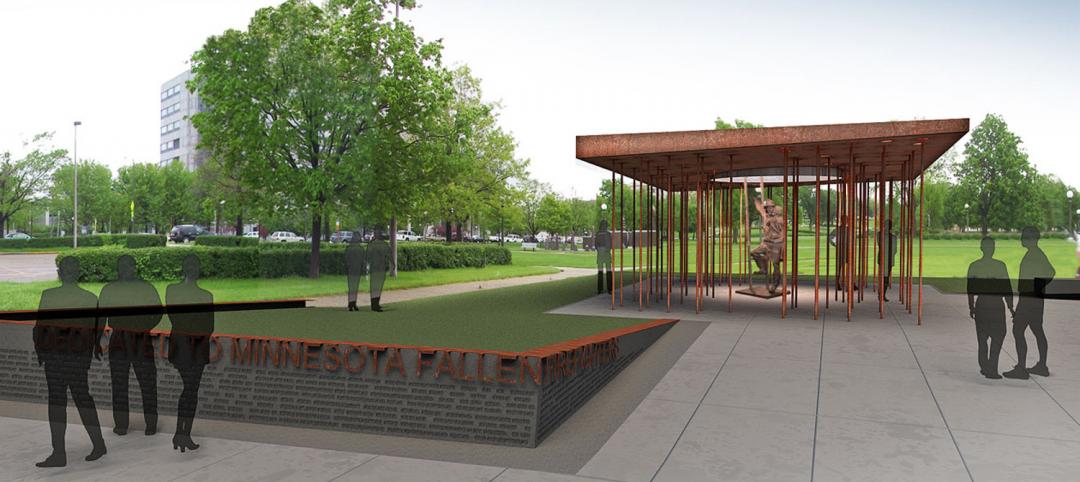Beyond the door material, another important decision is determining whether a more sophisticated door system is required for the application. In the MasterFormat section 08 30 00, Specialty Doors and Frames, a number of door types are listed for special functions, access locations, sliding and folding hardware, and even pressure-resistant types. Among these, there are several mentioned by Building Teams for consideration today:
• Pivoted or hinged doors. Both pivots and hinges can be used interchangeably, although hinged, prefabricated doors are generally less expensive. The presentation of the door types is the key factor. A hinged door typically reveals a knuckle spanning 4½ inches, while a pivot door’s profile is much smaller, with a 1½-inch knuckle. (Means Illustrated Construction Dictionary defines a door knuckle as “one of the enlarged, protruding, cylindrical parts of a hinge through which the pin is inserted.) The pivot door also offers a higher level of durability, making it a common choice for commercial applications.
• Balanced doors. Ideal for windy climates, a balanced door is a more sophisticated, engineered system for exterior entrances. “The balanced door system is a complete assembly where the hanging and closing of the door is controlled by the door system, negating some of the effects of excessive wind conditions,” says Jim Berg, a veteran door systems consultant.
If a balanced door isn’t in the budget, then pivoted or hinged doors need to be designed with higher opening and closing forces, as more of the door leaf is exposed to the wind.
• Automatic and revolving doors. Automatic doors are commonly used to meet the requirements of the Americans with Disabilities Act, or simply to handle highly trafficked entrances, as in hospitals and grocery stores. Because the price difference between automatic and revolving doors is substantial, revolving doors are usually reserved for buildings with significant weather requirements.
Revolving doors can also be helpful in mitigating the effects of strong negative and positive air pressures created by the HVAC systems and outdoor conditions, which cause wear and tear to a typical door. Consequently, the number of service calls is reduced with revolving or vestibule door systems.
According to Studio 08 Principal Rick Lewis, the most common type of revolving door is the single-post door. However, “Many of the airports are now using a type that allows more people to be in the door unit at one time, to move more traffic,” he says. Today there are small, three- and four-wing models for lower-traffic applications, while the large, two-wing or three-wing automatic revolving doors are more common in retail centers, hospitals, and transportation centers.
In most applications, a low-energy power operator meeting ANSI A156.19 (Standard for Power Assist and Low Energy Power Operated Doors) is specified as an ADA-compliant installation. However, for industrial settings, a heavy-duty power operator compliant with ANSI A156.10 (American National Standard for Power Operated Pedestrian Doors) is used. The industrial types are often specified with a ramp and guides, as the doors generally don’t stop and reset if a person or object enters the sensory field.
While the lower energy operators do stop and reset, this action can eventually wear down the mechanism. “Currently, manufactured units are considerably better than the ones that first came out 20 years ago,” says Lewis. “However, an ANSI A156.10 unit requires a lot of maintenance because the door operator is used each time a person, cart, or motorized vehicle passes through the opening.” Lewis says there is considerable power and momentum in the door as an operator is functioning, and “this causes not only the operators to receive a lot of abuse, but also the doors and frames.”
While retrofitting ordinary doors into automatic doors can be difficult and expensive, there are cases where there is no way around the problem for certain types of buildings, such as churches, temples, mosques, and other religious institutions, which are now required by ADA standards to update their access points. +
Related Stories
| Mar 7, 2012
Firestone iPad app offers touch technology
Free app provides a preview of Firestone’s Roots to Rooftop Building Envelope Solution with an overview of all the products from ground and stormwater management solutions, to complete wall panel and commercial roofing system applications.
| Mar 7, 2012
LEO A DALY opens new office in Riyadh, Saudi Arabia
Jay N. Kline, Regional Manager – Saudi Arabia, to lead new office.
| Mar 7, 2012
Turner appointed Batson-Cook CFO and treasurer
Cecil G. Hood to continue in advisory role.
| Mar 7, 2012
Thornton Tomasetti names Dowdall VP of Kansas City office
Dowdall will be responsible for supporting the Property Loss Consulting, Building Performance and Building Sustainability practices nationally.
| Mar 7, 2012
LEO A DALY selected to design Minnesota Fallen Firefighters Memorial
The bronze, figurative sculpture of a firefighter rescuing a child, which is currently on display at the Minneapolis/St. Paul International Airport, is lit by natural light through a circular void in the monolith.
| Mar 7, 2012
Houlihan Lokey adds Steffen to Industrials Group
Steffen bolsters group with experience in the building materials and rorest product sectors.
| Mar 6, 2012
Country’s first Green House home for veterans completed
Residences at VA Danville to provide community-centered housing for military veterans.
| Mar 6, 2012
EwingCole completes first design-build project for the USMA
The second phase of the project, which includes the academic buildings and the lacrosse and football fields, was completed in January 2012.
| Mar 6, 2012
Gensler and Skender complete new corporate headquarters for JMC Steel in Chicago
Construction was completed by Skender in just 12 weeks.
| Mar 6, 2012
BLT Architects promotes two to associate
Architect Nicole Dress and interior designer Jessica Moser acknowledged for excellence.

















